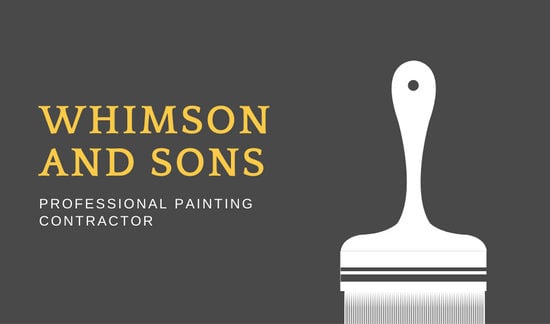Seasonal Considerations For Commercial Exterior Painting: What You Required To Know
Seasonal Considerations For Commercial Exterior Painting: What You Required To Know
Blog Article
Web Content By-McLamb Rosendal
When you're planning a commercial external painting task, seasonal elements can make or damage your results. You'll want to consider how temperature and humidity impact paint application and drying out times. Picking the right season can guarantee your paint adheres properly and lasts much longer. However which seasons are absolutely the very best for this sort of work? Allow's explore the key elements that can affect your task's success.
The Effect of Temperature Level on Paint Application
When you're intending a commercial exterior paint task, the temperature level can significantly influence just how well the paint sticks and dries.
Preferably, you intend to paint when temperatures vary between 50 ° F and 85 ° F. If it's as well cold, the paint might not cure appropriately, bring about problems like peeling off or fracturing.
On the other side, if it's as well warm, the paint can dry out too quickly, avoiding proper adhesion and resulting in an unequal coating.
You need to additionally consider the moment of day; early morning or late afternoon uses cooler temperature levels, which can be more desirable.
Always inspect the supplier's recommendations for the particular paint you're making use of, as they often offer support on the perfect temperature array for optimum results.
Humidity and Its Result on Drying Times
Temperature isn't the only environmental aspect that affects your industrial outside painting project; moisture plays a substantial role as well. High moisture levels can slow down drying times drastically, influencing the overall top quality of your paint task.
When the air is saturated with moisture, the paint takes longer to treat, which can bring about problems like inadequate attachment and a greater risk of mold growth. If you're repainting on an especially humid day, be prepared for extended delay times between coats.
It's essential to monitor neighborhood climate condition and strategy as necessary. Ideally, aim for humidity levels in between 40% and 70% for optimal drying out.
Keeping these consider mind ensures your project stays on track and provides a long-term surface.
Best Seasons for Commercial Exterior Painting Projects
What's the best time of year for your business exterior paint projects?
Springtime and very early autumn are usually your best options. During these periods, temperature levels are light, and humidity levels are typically reduced, producing suitable problems for paint application and drying.
Avoid summertime's intense heat, which can trigger paint to dry also rapidly, leading to inadequate attachment and finish. Similarly, wintertime's cold temperatures can hinder appropriate drying and healing, running the risk of the durability of your paint job.
Go for average cost paint house with temperature levels in between 50 ° F and 85 ° F for ideal outcomes. Bear in mind to inspect the neighborhood weather prediction for rain, as wet problems can ruin your job.
Planning around these elements ensures your painting job runs smoothly and lasts longer.
Final thought
Finally, intending your commercial exterior painting jobs around seasonal considerations can make a substantial difference in the outcome. By scheduling job throughout the suitable temperatures and humidity degrees, you'll ensure far better bond and drying times. https://gregoryufqal.blogoscience.com/41480907/reveal-techniques-for-connecting-your-vision-to-your-paint-professional-to-guarantee-the-job-s-success in mind to keep an eye on regional weather prediction and pick the correct time of year-- spring and very early autumn are your best options. Taking these actions will help you accomplish a durable and professional surface that lasts.
